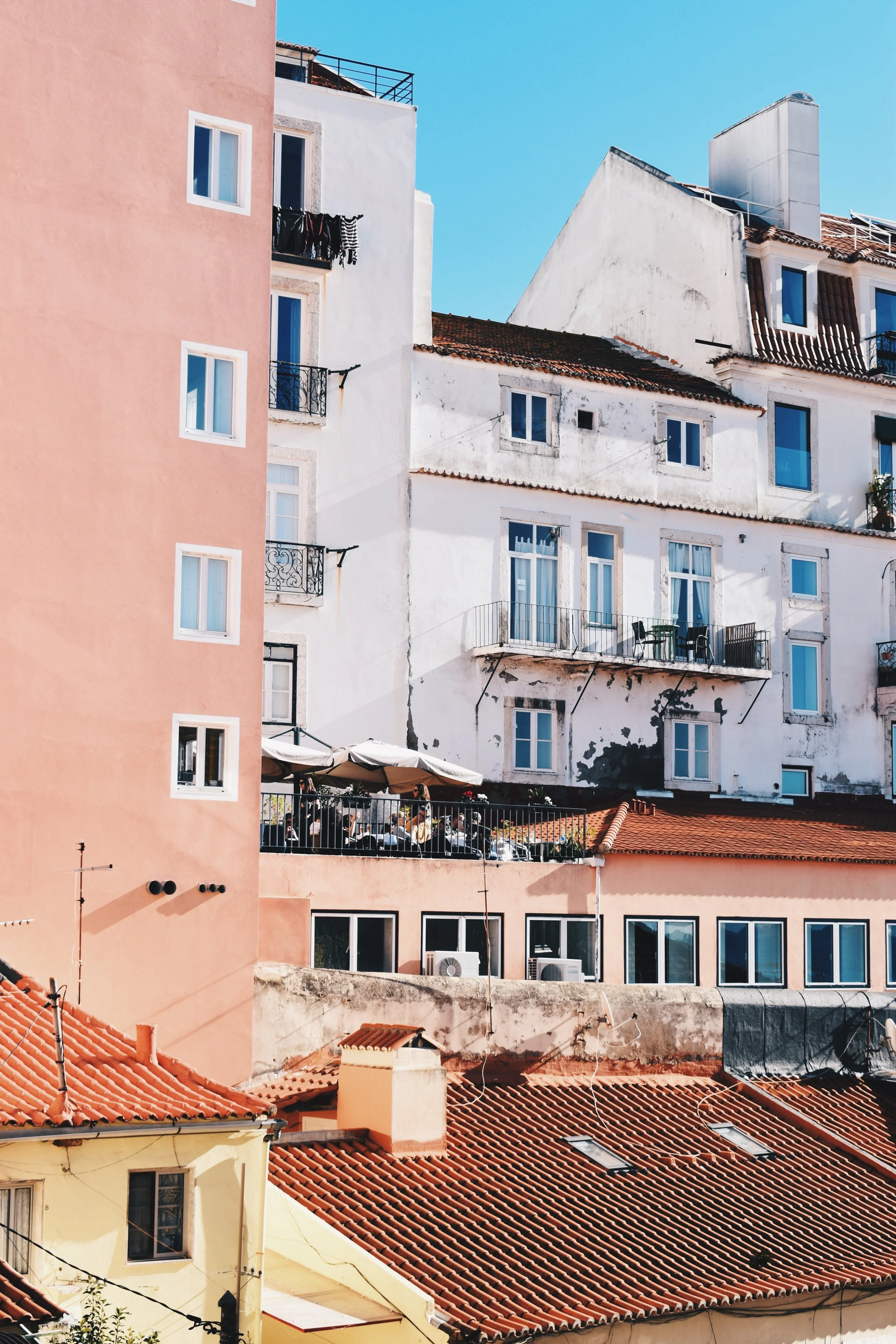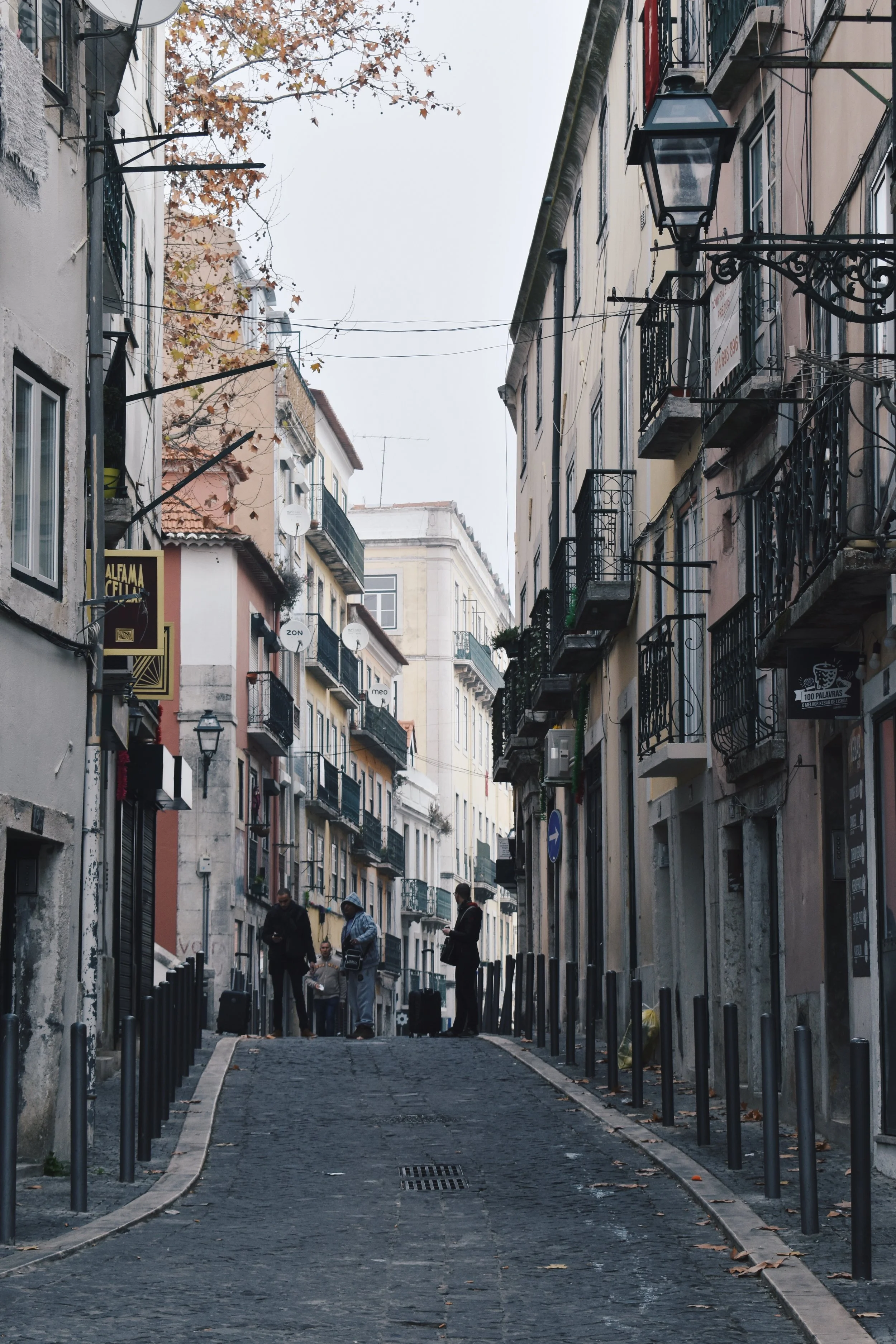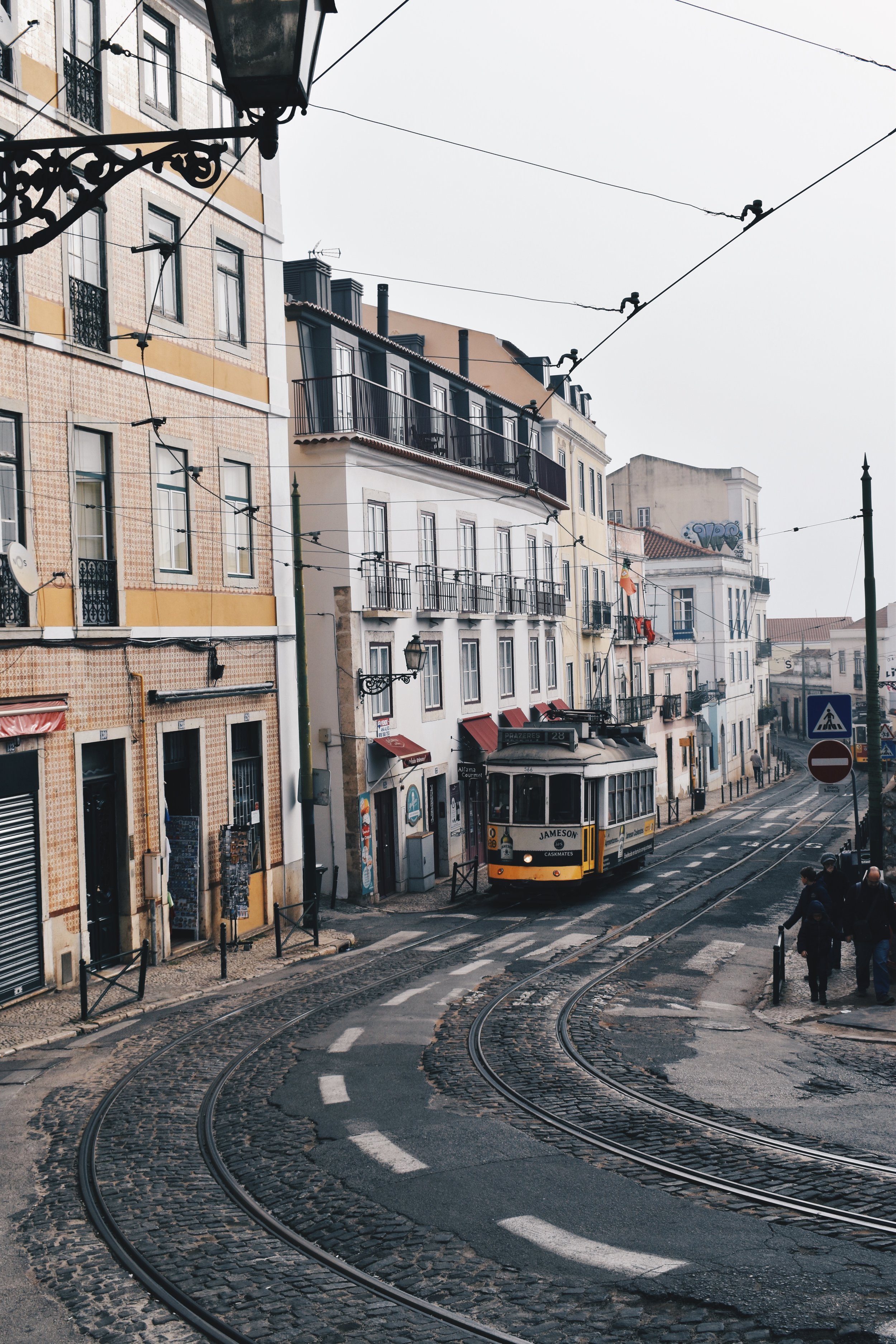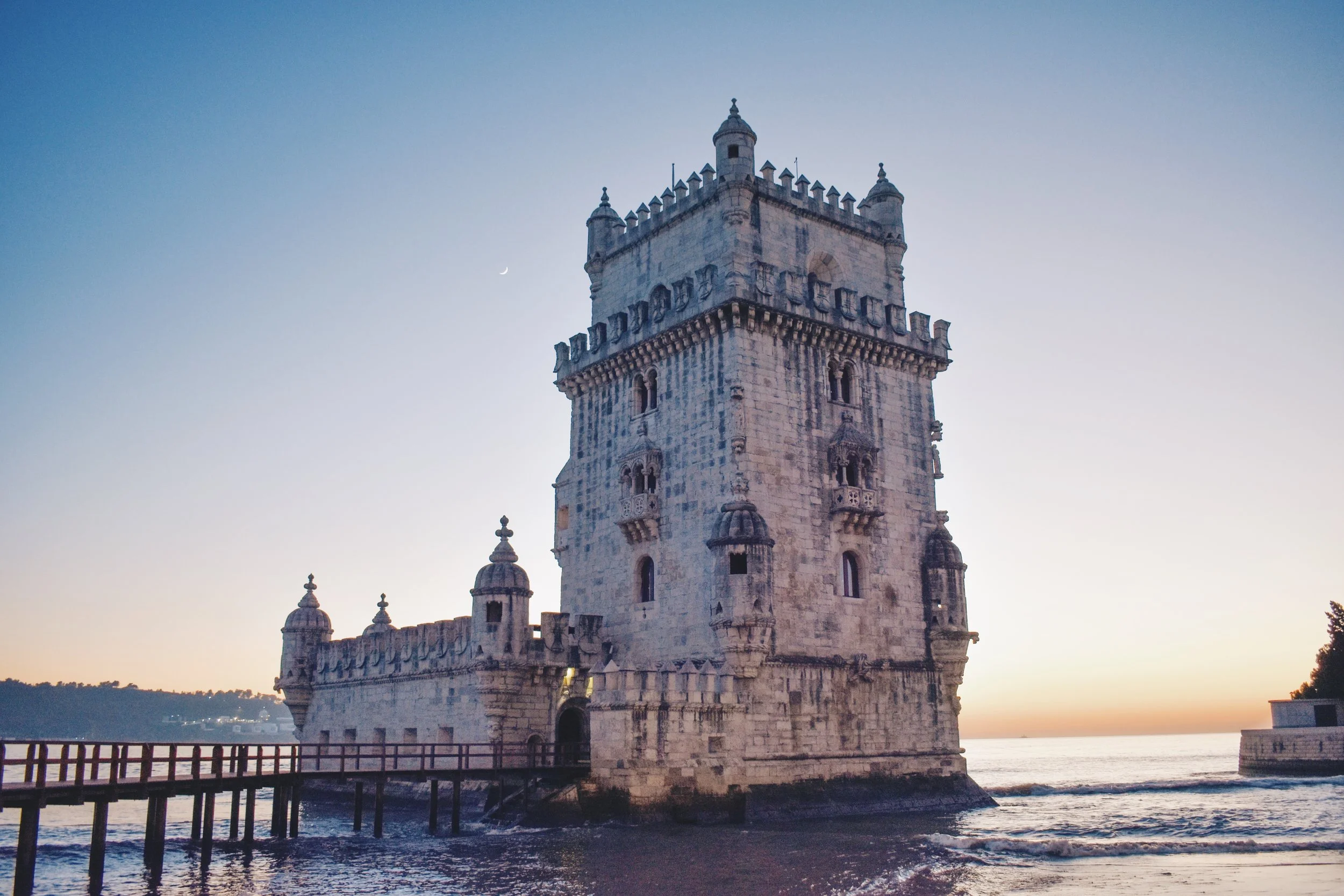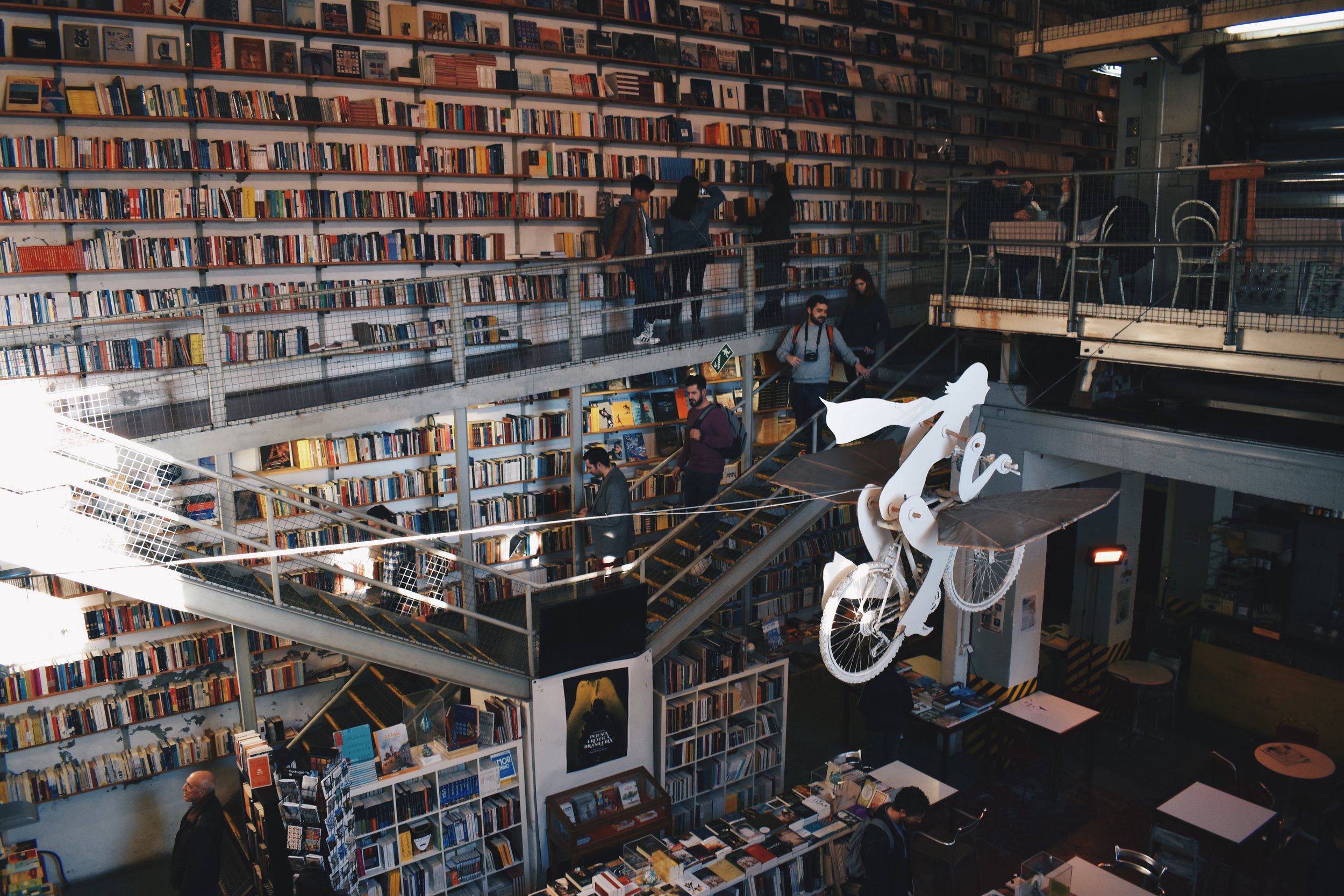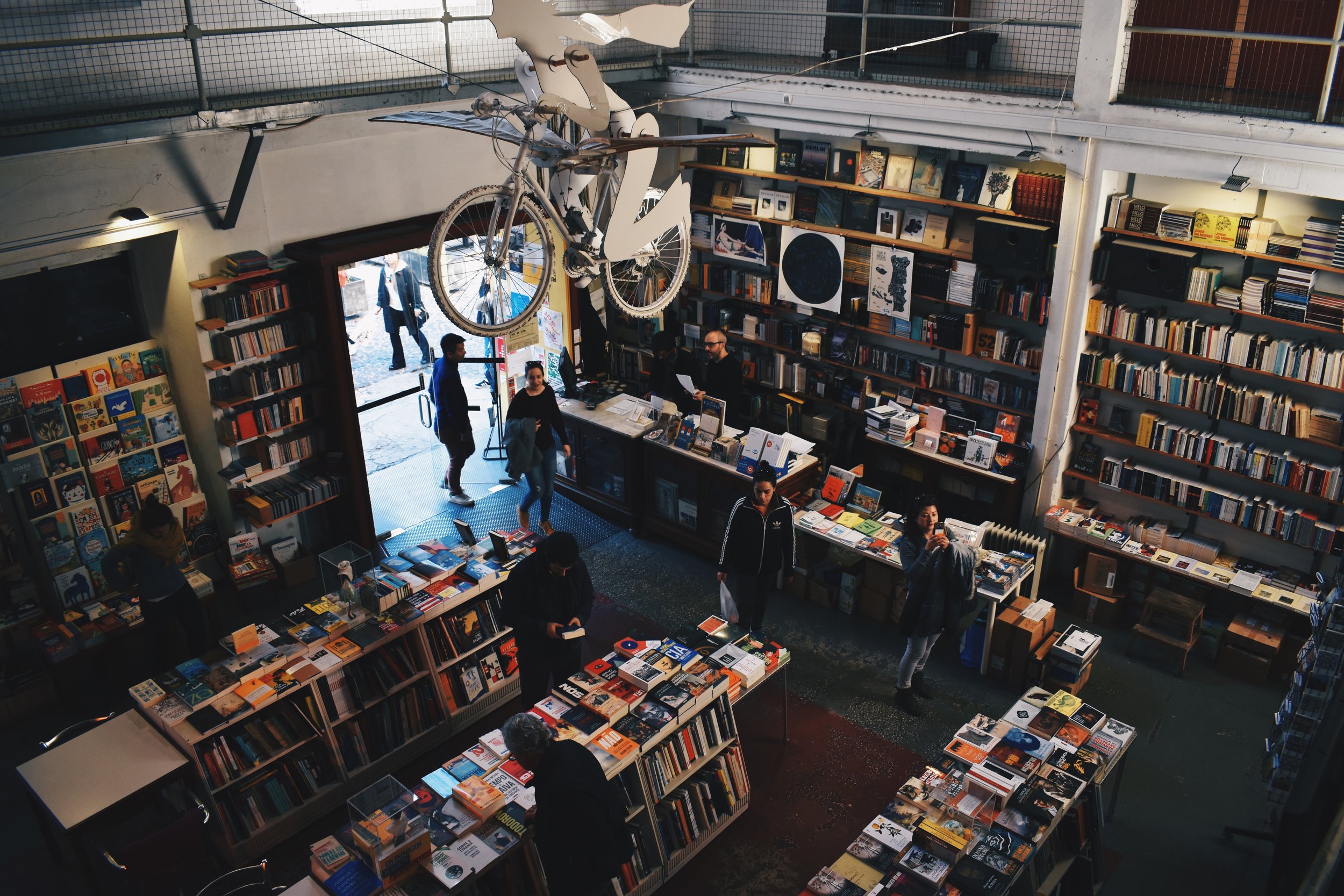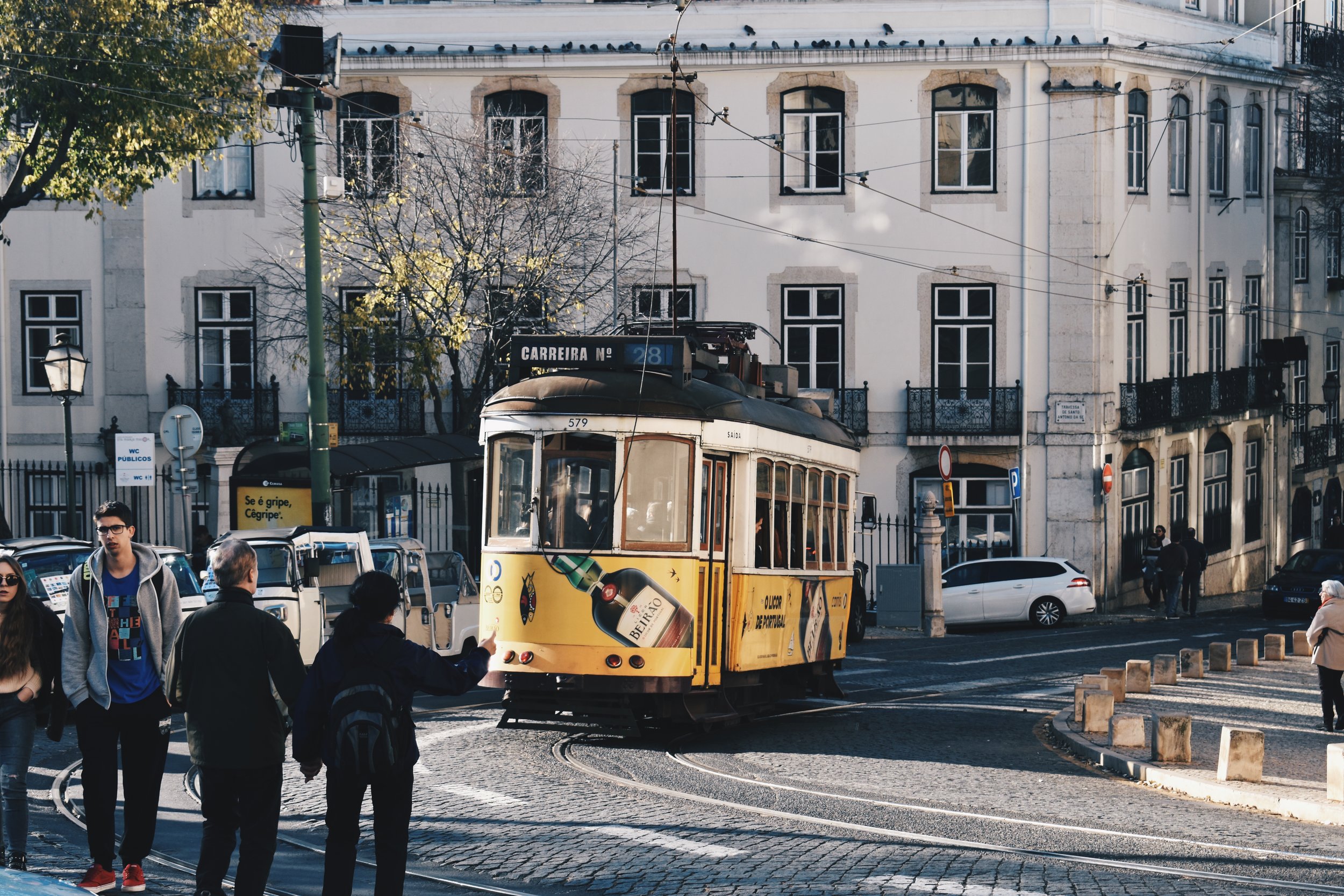The Ultimate Guide to Lisbon — A Complete Itinerary
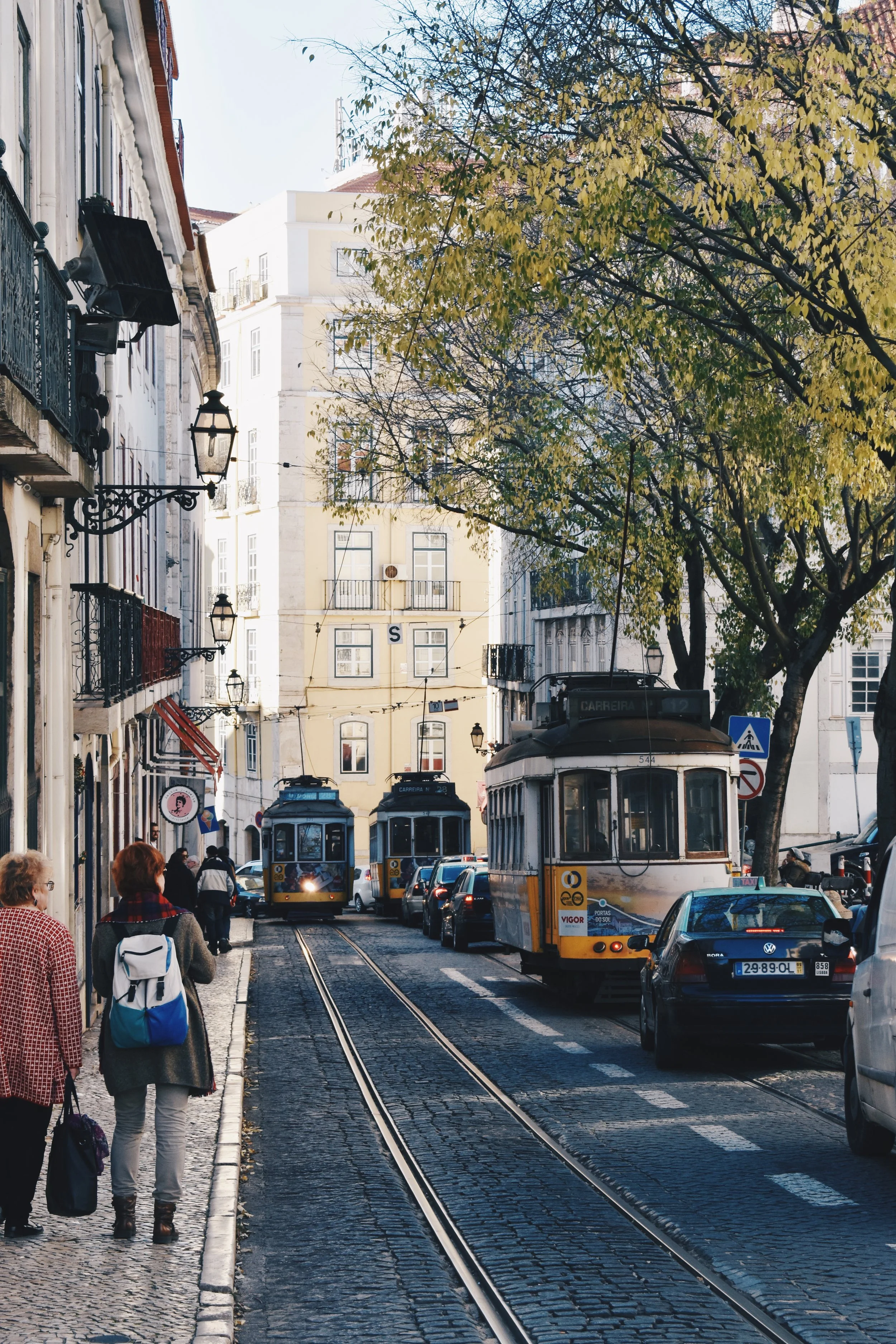
After piecing together posts on the best food & drink in Lisbon, the coolest things to do in the city (like buying a book from the oldest book store in the world still in operation as certified by Guinness World Records), day trips out to the summer town of Cascais, the westernmost point of the European continent and to where Portuguese royals used to spend their summers in Sintra, I thought I’d finally get round to writing the complete ultimate guide to Lisbon, including the most famed tourist attractions to some of my more low key favourites.
Having a good 10 days to explore the city means I really got to cover quite an amount of ground, from the old part of town of Alfama with its winding alleys of cobblestone streets and hole-in-the-wall taverns, to the busy shopping streets of the Chiado area, and to the coolest revitalised creative hubs of the Alcântara neighbourhood.
As an aside, should you require a visa to visit Portugal, iVisa’s got you covered. It’s a fuss-free process designed to make things easier for travellers!
I’ve split the itinerary according to neighbourhood / area, and you can do an area in one day but that really depends on the pace of your travel, starting with the city centre and radiating outwards.
From my trip to Portugal, I've turned some of my photography into my brand of everyday products which you can check out below. Worldwide shipping is available so if you're looking for a notebook with dot grid, blank or ruled pages, tote bags, postcards & tumblers to take home to remember your travels if you too have been to these parts of Portugal, or for some travel inspiration!
View the full product catalogue at the shop here.
1. Baixa Chiado
This is Lisbon’s busiest and most popular area with tourists because it’s slap bang in the middle of the city’s downtown, with many shopping boutiques, handful of small museums and important monuments (Rua Augusta Arch, Praça do Comércio).
Start your day at one of the many bakeries and pastry shops in Lisbon — the most famed pastry being (of course), pastéis de nata, which you can wash down with a cup of coffee or tea.
Almost all bakeries and shops sell this delicious pastry, but if you’d like to head to a shop that’s more well known, this area offers one in the form of Manteigaria, so known as the rival of Pastéis de Belém.
Here, you can watch pastry chefs make the tarts right in front of you through the glass, as you enjoy your tart at the counter top. There aren’t any seats available but you can take away if that’s what you so please!
After, head over to Carmo Convent, a Roman Catholic convent that was devastated by the great 1755 earthquake which left the convent in ruins.
Unlike the other ruins in the city, this convent wasn’t completely bulldozed over or rebuilt, instead left in its state and preserved to remind us of the extent of Mother Nature’s prowess.
Today, you can visit the convent (which is ticketed) and access a small archaeological museum which has artifacts of that interest from a time Portugal has long left behind.
As you enter the convent, you won’t even feel like you’re in one because the roof has been completely taken off, and I don’t know about you but I’ve never been in an open-air convent so that was a pretty cool experience.
It was an interesting wander, though small and it was fascinating to see a model construction of what the convent looked like back then and what’s left of it now.
There were also two small mummified bodies preserved in the small museum which was a little unsettling but hey, there’s always a first for everything.
Lisbon is known for its many hilltop views, and one particular one that thrives on tourists is the Santa Justa Lift, which you can pay to get on with your metro card.
Personally though, I skipped over this for there are many other viewpoints in Lisbon that are free and a lot less crowded.
And also we took a graffitied lift near our Airbnb when we wanted to go to a Pingo Doce supermarket so while it wasn’t the fanciest of lifts, we kinda got that experience for free so hey.
After taking in a feast for the eyes, you have a good number of options for great food in the area, namely Taberna da Rua das Flores, Café Buenos Aires, Casa do Alentejo, and Restaurante Zé dos Cornos. These places are available for dinner as well, so you can use this list of recommendations for both lunch or dinner in this area.
I tried Restaurante Zé dos Cornos for lunch and Casa do Alentejo for dinner and both were fantastic, doing local Portuguese dishes, with the former set in a humble eatery where you’ll be sitting alongside many locals going about their day and the latter being a proper restaurant which gets atmospheric when night falls.
With your bellies full, head over to Livraria Bertrand, certified by Guinness World Records to be the oldest book store still in operation. You won’t be able to tell when you step in as it looks just like any other chain of book stores, but with every purchase you can get staff to stamp your pages with a chop in English and / or Portuguese to certify your purchase.
Take in the best of city life at Rossio Square (Praça do Rossio / Praça de D. Pedro IV), a large plaza that’s always bustling with many shops, boutiques and eateries around. You can people watch here or admire the mosaic tiles that now line the street of many cities that were once part of the mighty Portuguese empire, with no better examples of this remarkable form of architecture than in Portugal’s capital city itself.
From there, head on down to the pedestrian street of Rua Augusta, a street lined with many shops familiar to an international crowd like Zara, H&M, Bershka, Mango, Springfield stc. A handful of restaurants line this street as well with many an eager waiter, but if you know what’s good, you’ll know the best eateries are not ones with waiters that need to invite the crowds in or be so conveniently found on such busy streets where tourists concentrate. Avoid, avoid, avoid, I cannot stress this enough.
You’ll end your walk at the Rua Augusta Arch, a massive and beautiful stone structure built to commemorate the rebuilding of the city after the 1755 earthquake.
Here, you can pay a nominal fee of a couple euros and go up the arch, where you’ll get the view of Praça do Comércio in all its glory as well as the river as well as the busy pedestrian street of Rua Augusta. It’s from here that I think you can get the best view of Panteão Nacional next to the river framed by the city skyline.
After, head down to the bustling Praça do Comércio and admire the mosaic tiled pavement and imagine how this used to be the spot where spices and other produce from the rest of the world used to come in and out by waters.
From there, cross the busy road to Av. Ribeira das Naus Beach where you can sit on the ledge and watch the sun go down. On a clear day, this is a spectacular sight as you look behind and see the city’s architecture glowing orange red and the city starts to light up.
From there, a good place for dinner is Pizzaria Lisboa for a nice restaurant serving some of the best pizza Lisbon cooks up, a nice walk from the area. If that’s not your gig, hop on to any of the forms of transportation as that’s a massive transport hub, and you can head up back to Baixa for the restaurants stated above.
2. Alfama
Alfama, Lisbon’s oldest quarter is where you’ll find a labyrinth of winding, narrow cobblestoned streets shaking up and down the hills of Portugal’s capital city.
Start your day filling up at any of the city’s bakeries, many you’ll find in the neighbourhood of Graça, as well as a pastry shop selling pastéis de nata near the Castle.
After, make your way to Castelo de São Jorge, one of Lisbon’s most popular attractions. It’s a Moorish castle overlooking the city centre and Tagus River, and suffered much after the 1755 earthquake which left a lot of the castle in ruins. These days though, it’s still a sprawling compound from where you can get some of the most stunning overhead views of the city and river. Heading inwards to the walls of the castle, you can scale staircases and trek the walls of the castle. The end of your visit will be at a small museum with a bit of history of the Portuguese culture as well as some artifacts from an age ago.
Options for food in this area include local Portuguese taverns like the aforementioned Restaurante Zé dos Cornos as well as Restaurante Zé da Mouraria. I highly recommend heading to one of these places for the atmosphere and hearty sharing platters of food, especially since you’ll be sharing the space with many other locals, always a mark of a good place for food.
If you’d like something lighter, just a stone’s throw away from the castle is Café da Garagem, a quaint cafe offering stunning views of the city and its buildings through a massive glass window. Sit right next to it to enjoy the view fully while you enjoy your food.
If you find yourself in the neighbourhood on a Tuesday or Saturday, head to Feira da Ladra, also known as the Thieves Market for a cool experience where vendors hawk their wares and you’ll find everything from vintage clothing, old telephones and mobile phones (anyone fancy a brick-like Nokia with the only game being Snake?), cutlery, vinyls and record players, paintings, stamps, old coins and so much more.
After, stop by one of the many miradouros, popular lookout points with locals and travellers alike, with a glass of wine in hand. In this area, you have the option of Miradouro Sophia de Mello, Miradouro das Portas do Sol, and Miradouro de Santa Luzia. I’ve chronicled my experiences at these different viewpoints here and you can choose which one would fit your needs best, including what you want to capture in the frame of your lens.
Make a trip down to the Fado Museum (Museu do Fado) to learn about Fado, a genre and style of Portuguese music and singing that is expressive, melancholic and poetic. Most lyrics from the early days described the everyday lives of the Portuguese common folk, and it was fascinating to get to hear and see so many presentations of Fado music, something I don’t think you’ll find easily outside Portugal.
If you can spare the time, hop on an Uber to the National Museum of Azulejo, ceramic tile paintings that are as elaborate as they are beautiful, that dorn many a building in Lisbon and the rest of Portugal.
There aren’t many good options in this area for dinner I managed to find so either head back to one of the aforementioned restaurants or go with somewhere close to your accommodation which should mark the end of a long day.
3. Cais do Sodré
A big transport hub (and where you’ll get on the train to other towns and areas outside of Lisbon) this has been turned into quite the buzzy area. Here you’ll find cafes, restaurants, food halls, pubs and bars alike which transforms this area into quite the beast by nightfall.
But before that, for a cool Portuguese experience, head to Loja das Conservas, a shop specialising in the Portuguese culinary tradition and export of canned fish. Decked out in eye-catching colours in seemingly endless rows, the tradition of canned fish has been a Portuguese culinary institution since the 1800s. It’s Portugal’s original fast food staple, a cheap, quick and easy to consume type of food that many say is the perfect souvenir to take home (which I’ll say probably depends on where home is for you— I wasn’t about to squeeze a bunch of canned fish across continents).
After, head over to Elevador da Bica, supposedly Lisbon’s most photographed street. It’s actually a tram acting as a lift, the same you’ll find on some other streets, one that takes you up the very steep incline. You can choose to actually take it, but what’s more the experience is going around the entrance, and finding yourself on the side street where you can watch the lift load up and start to climb the steep slope.
Head to Mercado da Ribeira, which started life as an actual food market that’s been around since the late 1800s. In 2014, Time Out Lisboa took over the space and turned it into a massive food hall with vendors from chefs and chain restaurants from the city and country at large. Day or night, this is an incredibly atmospheric place to be and is always packed.
By nightfall, head to The Pink Street, a street that has physically been painted pink with many bars and clubs around, and here is where you’ll find nightlife to be buzzing.
Other food options for this area include Sala de Corte, an upscale restaurant for some of the best steaks you’ll get in the city.
One of my favourite joints is Pistola y Corazón Taqueria, a hot spot for tacos and tequilas (and many others in between— catch a full review here). It’s always packed to the rafters, even in the middle of winter so arrive early for a table. Once in, you’ll hear the rambunctious chatter and boisterous laughter of the diners squeezed into this cosy space over the music and I have to say if there’s any place I’d gladly go to over and over again, it’d be this.
4. Belém
Technically, Belém isn’t really in Lisbon city itself. But it is an integral part of Portugal’s history, as it was here where Portuguese explorers set off to discover the world.
There are many popular sites of interest in the area, including Mosteiros dos Jerónimos, a monastery where explorers and sailors sought refuge and spiritual enlightening before their treacherous voyages back in the day. We hopped on the free guided tour (they do alternating ones by volunteers in Portuguese and English), and our volunteer kindly translated her commentary to French for a couple on the tour.
The monastery is huge, and I'm glad we had the volunteer to put everything into context for us, including the structural build of the monastery, the placement of tombs of explorers, symbols dotted around the walls etc.
Other sights include the iconic Belém Tower (Torre de Belém), a defensive tower constructed to protect access to the Tagus river and has become an unmistakeable symbol of Belém. You can go up the tower for a small fee for views from up top which I opted out of, seeing as the tower itself is what you're really there to see.
Also, a grand structure called the Monument to the Discoveries (Padrão dos Descobrimentos) some 52 metres high celebrates the Golden Age of Portuguese Discoveries in the 15th and 16th century. Many of the country's famous explorers have been enshrined in the Monument, shaped in a ship's prow.
Here's where many of Lisbon's famous museums are located, the National Coach Museum (Museu Nacional dos Coches) detailing the history of travel through times being one of the most renowned and well-visited museums in the city. Others of note include the Electricity Museum (Museu da Electricidade) and the Presidential Museum (Museu da Presidência da República).
Of course, you can't talk about Belém without talking about Pastéis de Belém— the place to get your fix of Portuguese egg tarts. I still do think this is the best place to get them out of those I tried, and queues can get really long whether dining in or taking away.
Other options for food in the area include a busy fast food type joint called Pão Pão Queijo Queijo, and another traditional Portuguese restaurant by the name of Os Jerónimos.
5. Alcântara
What started as an industrial area occupied by textile, chemical production of soaps, candles and other oils, the district Alcântara has been turned into a hip neighbourhood of many pubs and discotheques, simply because it's distance away from the city centre meant less noise restrictions. Now, more apartments and lofts are being constructed making this a real up-and-coming neighbourhood.
The premier attraction here is LXFactory, which used to be a textile factory, and is now a compound of local boutiques, bakeries, gift shops, barbers, clothing and retail, as well as many dining options.
Can't miss places here include Ler Devagar, maybe one of the coolest bookstores I've ever been, and Rio Maravilha, one of the most fantastic places for food & drink in Lisbon, including a nice rooftop where you can enjoy a cocktail as the sun goes down.
Another district I didn't really mention is Parque das Nações, known as the newest part of town, as well as Lisbon's most northern civil parish. This area was developed and revitalised for Expo '98 and its where you'll find bold, striking new architecture a world away from the historic city centre. It's also where you'll find the vast Oceanarium and casino.
If I'm being completely honest though, this felt really odd. It was almost too inauthentic and corporate glitzy, which felt totally at odds with the character of Lisbon. Of course times change and buildings get higher, but as someone who grew up in a spanking new city of skyscrapers, it just feels incredibly soul-less to me.
I'd personally skip over this area for incredible day trips to Sintra, Cascais and Cabo da Roca, which should really be all you need to really see the whole Lisbon and its surrounding areas. Other options in the area include other parts of the Estoril Coast including stunning places like Guincho Beach.
Lisbon is truly one of the most stunning cities I've been to, with lots of soul and character. It being a "still-emerging" destination in the context of Europe means prices haven't gone through the roof yet, but I won't be surprised if things change within the next decade or two, (and things are changing), and I would grab the opportunity to visit as soon as I can.


